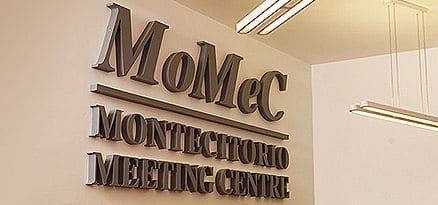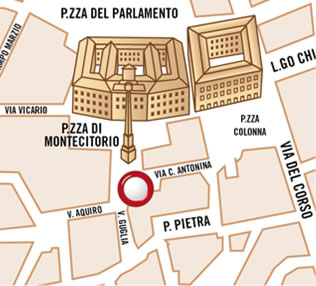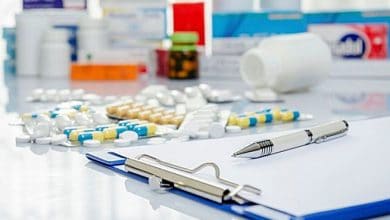
Who will be there and what will be discussed tomorrow, Tuesday 21 February, from 3 pm at the Montecitorio Meeting Center (via della Colonna Antonina 52) at the seminar "Innovation, international networks and knowledge spillovers - Pharmaceutical industry, the international perspective and the case Gsk in Italy”
Veronica Sansonetti – 20/02/2017 – formiche.net
 In 2015, trade in pharmaceutical products increased in volume nine times the value it had in 1995. Among the countries of the Union, Italy ranks second after Germany for turnover, and exports about 73% of the entire production . In the world, more than 7,000 medicines are currently in the research and development phase, also thanks to the efforts of researchers and research institutions located in our country. In 2015 alone, around 1.5 billion euros were spent on pharmaceuticals and biotech, of which around 90% came from the private sector, employing 6,100 R&D workers.
In 2015, trade in pharmaceutical products increased in volume nine times the value it had in 1995. Among the countries of the Union, Italy ranks second after Germany for turnover, and exports about 73% of the entire production . In the world, more than 7,000 medicines are currently in the research and development phase, also thanks to the efforts of researchers and research institutions located in our country. In 2015 alone, around 1.5 billion euros were spent on pharmaceuticals and biotech, of which around 90% came from the private sector, employing 6,100 R&D workers.
THE SEMINAR
These are some of the elements that emerged from the study center's research Cerm (Competitiveness, Rules, Markets), entitled "Innovation, international networks and knowledge spillovers - Pharmaceutical industry, the international perspective and the GSK case in Italy". The seminar, organized by Formiche, will take place tomorrow, Tuesday 21 February, from 3 pm at the Montecitorio Meeting Center (via della Colonna Antonina 52).
WHO WILL BE THERE
 The study will be presented by professor Fabio Pammolli (in the picture), president of Cerm. A debate will follow in which they will intervene Luc Debruyne, GSK Global Vaccines president, and MPs Emilia DeBiasi, chairman of the health commission in the Senate, Maria Rizzotti, Vice President of the Senate Health Committee, Luigi D'Ambrosio Lettieri, Senator Health Committee, e Frederick Gelli, deputy and health manager of the Democratic Party. He will complete the work David Pharaoh, Undersecretary at the Ministry of Health.
The study will be presented by professor Fabio Pammolli (in the picture), president of Cerm. A debate will follow in which they will intervene Luc Debruyne, GSK Global Vaccines president, and MPs Emilia DeBiasi, chairman of the health commission in the Senate, Maria Rizzotti, Vice President of the Senate Health Committee, Luigi D'Ambrosio Lettieri, Senator Health Committee, e Frederick Gelli, deputy and health manager of the Democratic Party. He will complete the work David Pharaoh, Undersecretary at the Ministry of Health.
THE GSK CASE
Cerm's research also focused on GlaxoSmithKline (GSK), the multinational group which, with its Italian subsidiaries, has a turnover of around 1.8 billion euros and generates just under a billion in added value. “In our country – reads the research – GSK has set up a real drug supply chain, capable of serving around 120 foreign destinations. The Italian activities of the group also represent an interesting case study for the ability to establish research collaborations capable of enhancing and supporting excellent research centers and nuclei of expertise within the non-industrial research system. Just think of the collaborations that, since 2010, have been started with Telethon and the San Raffaele Foundation for the development of therapies for seven different genetic diseases”.
Related news:
Pharmaceutical companies and corruption: the global scandal
 Challenges and potential of the pharmaceutical industry. Cerm Report
Challenges and potential of the pharmaceutical industry. Cerm Report
The importance of the pharmaceutical sector, the role of Research and Development and the case of GlaxoSmithKline, the first foreign investor in Italy. These are the themes at the center of a research by the Cerm study center (Competitiveness, Rules, Markets), entitled "Innovation, international networks and knowledge spillovers - Pharmaceutical industry, the international perspective and the GSK case in Italy", presented this afternoon at the Montecitorio Meeting Center (via della Colonna Antonina 52).
The study was illustrated by Professor Fabio Pammolli, president of Cerm and author of the research with Armando Rungi (Imt High Studies Lucca). At the debate organized by Ants they took part Luc Debruyne, president of Global Vaccines of Gsk, and the parliamentarians Emilia DeBiasi, chairman of the Senate Health Commission, Maria Rizzotti, vice president of the Senate Health Committee, e Frederick Gelli, deputy and health manager of the Democratic Party.
PRODUCTION
Pharmaceutical production is traditionally concentrated in a few countries. And so - according to scholars - it will also be in the future, with approximately 85% of drug production coming from the same geographical areas (Europe, United States and Japan), where there are the best laboratories and the necessary skills. 47% of world demand for pharmaceuticals is covered by the ten largest companies, six of which are in Europe and four in the United States.
THE LEADING COUNTRIES
In recent years, the weight of the pharmaceutical sector has grown both in the United States and in the European Union, arriving today to generate 5-6% of the value of manufacturing. But overall the European Union is the leader in production, more than the United States. This primacy has already belonged to the European Union since the 1990s, when it surpassed the United States in added value, which however still has a turnover of around 187 billion euros, compared to the approximately 244 billion euros in turnover of the EU.
Although not a member of the EU, the largest producer country in Europe is Switzerland, with 60.8 billion euros in turnover and 16.7 billion euros in added value in 2014. Among the EU countries, Germany is the first producer by equal to a fifth of the community total, around 42 billion euros in turnover which generate around 17.1 billion in added value. Italy, France, the United Kingdom and Ireland follow among the member countries as leaders in Europe and in the world. In particular, Italy appears from the study to be second in value of pharmaceutical production, immediately after Germany.
THE CONTRIBUTION OF THE PHARMACEUTICAL SECTOR TO GROWTH
At the firm level, revenue growth rates in the pharmaceutical sector fluctuate less than in other sectors and show greater persistence. According to the Cerm scholars, the reasons for this lie in the fact that the sector has a stable demand, enjoys economies of scale and scope, and is among the most innovative. “If the sector had followed the trend of manufacturing, the losses in terms of production and employment would have been much greater,” reads the research.
Trade flows in the pharmaceutical sector have also grown much faster than the manufacturing average. In 20 years exports have grown by almost 9 times the (current) values of 1995, in the same period the total manufacturing has grown by 3.4 times (again at current values).
PHARMACEUTICAL COMPANIES IN ITALY
According to the most recent Farmindustria data, our country is second in value of pharmaceutical production, immediately after Germany, and exports about 73% of the entire production, mainly within the European Union itself. In 2015, related activities generated locally amounted to approximately 6.4 billion euros, including intermediate goods and services (including R&D activities) produced in Italy.
Pharmaceutical manufacturing is present throughout the territory in 12 out of 20 regions, but with a strong concentration in Lombardy and Lazio, which respectively have a turnover of 3.4 and 1.8 billion euros. Overall, in 2015 Istat reports that 464 pharmaceutical companies are active in Italy capable of employing a total of about 64,000 workers.
Furthermore, according to Istat, the sector contributes 4% of the total added value produced by all manufacturing, without counting the value-induced activities created by interaction with other upstream sectors, suppliers of goods and services for pharmaceutical production.
The foreign direct investment component is also strong. The sector is in fact among the most international in Italy. 10 out of 13 of the major Italian pharmaceutical producers are foreign multinational groups. Some have strong historical and territorial roots in our country, as in the case of GSK whose first foreign subsidiary in Italy dates back to 1932.
The drug multinationals create and distribute value in Italy for approximately 58% of the entire sector and employ approximately 54% of the total number of employees.
THE ITALIAN NUMBERS OF THE SECTOR
Among employees, self-employed collaborators and temporary workers, the sector in Italy employs a total of about 63,500 people, of which 6,100 are involved in R&D activities.
As of 2015, the sector reported investment projects amounting to 2.6 billion euros, of which 1.4 billion for R&D activities alone.
Also thanks to the research carried out in Italy, which increasingly specializes in areas such as biotechnologies, vaccines, blood products, advanced therapies, rare diseases and gender medicine, Farmindustria reports that more than 7 thousand drugs.
THE ROLE OF GSK
In addition to being the leading foreign investor in Italy, the GlaxoSmithKline group is the leading pharmaceutical group by industrial presence with over 5,000 employees, 3 production centers of excellence, 1 center of excellence in graphic arts and an international research center (one of the three world of GSK for vaccine research) where over 500 collaborators work from all over the world. The company's activities cover the entire industrial cycle, from clinical research to the production and marketing of drugs and vaccines, as well as scientific information and pharmacovigilance.
Analyzed as a case study by Cerm, GSK in Italy generates greater value than the average of the Group's companies in the rest of Europe. The group's activities with the highest value are those present in the USA. “Greater added value (about 1 billion euros in 2015) implies greater income distributed to labor (wages), capital (dividends) and taxation”, observe the scholars.
INVESTMENTS
Few problems have been encountered by research on the side of private investment in concessions, patents and licenses of companies active in Italy, which is no less than that of other European countries. The data relating to 2012, the latest year available, reported by the Cerm study see Italy as the third investor country, after Germany and the Netherlands and ahead of the United Kingdom and Belgium. In general, Research and Development in the pharmaceutical sector in Italy employs around 6,100 people, for an overall level of investment of 1,415 million euros (Farmindustria data, 2016).
THE PROBLEM OF ITALY
The perspective is different if we observe the incidence of public funds: "Between 2011 and 2015 there was a clear decrease, equal to 18.5% of the allocations for public R&D (State, regions and local authorities) destined for the 'Protection and promotion of human health', rising from 964 to 785 million euro (Eurostat). Pharmaceutical companies in Italy have only been able to partially compensate for the decrease in public funds with their own internal resources, in any case in line with a change in strategy in recent years, which sees the possibility of establishing external collaborations as an alternative to intra-mural research". reads the report of the study centre.
I'll tell you about the numbers and challenges of the pharmaceutical industry in Italy. The economist Pammolli speaks (Cerm)
The president of Cerm, Fabio Pammolli, talks about the results of a study on the pharmaceutical industry
"Innovation, international networks and knowledge spillovers - Pharmaceutical industry, the international perspective and the GSK case in Italy". This was the title of the event organized by Ants on 21 February in Rome at the Montecitorio Meeting Center (via della Colonna Antonina, 52) during which the results of a research conducted by the study center were presented Cerm (Competitiveness, Rules, Markets) on the pharmaceutical sector.
WHO WAS AT THE PRESENTATION OF THE CERM STUDY ON THE PHARMACEUTICAL INDUSTRY. PHOTO LACE
The study was illustrated by Professor Fabio Pammolli, president of Cerm and author of the research with Armando Rungi (Imt High Studies Lucca). Here are the main elements that emerged on the pharmaceutical industry in Italy and in the world: in 2015 the trade of pharmaceutical products increased in volume nine times the value it had in 1995. Among the countries of the Union, Italy is in second place after Germany by turnover, and exports about 73% of the entire production. In the world, more than 7,000 medicines are currently in the research and development phase, also thanks to the efforts of researchers and research institutions located in our country. In 2015 alone, around 1.5 billion euros were spent on pharmaceuticals and biotech, of which around 90% came from the private sector, employing 6,100 R&D workers. (Laws here the main results of the Cerm report)
They took part in the debate Luc Debruyne, president of Global Vaccines of Gsk, Daniel Finocchiaro, president and CEO of Gsk Italia, Marco Simoni, economic adviser of Palazzo Chigi e Federico Gelli, deputy and head of health of the Democratic Party. The scientist is also in the room Rino Rappuoli, managing director of Gsk Vaccini Italia, known for his studies on the prevention of dangerous and deadly diseases such as meningitis, Annarosa Racca, president of Federfarma (national federation of Italian pharmacy owners) e Sylvester Scotti, national secretary of Fimmg (Federation of general practitioners).
WHO WAS AT THE PRESENTATION OF THE CERM STUDY ON THE PHARMACEUTICAL INDUSTRY. PHOTO LACE
After analyzing the impact of the pharmaceutical industry in Italy, Momec mainly talked about vaccines, with reference to the government's recent national plan, and Milan's candidacy as a possible venue to welcome EMA, the European agency of the London-based drug, seeking a home following Brexit. “I believe that our country is not yet mature enough to independently decide what is right and what is not right on the subject of vaccination. Unfortunately, the information and communication campaigns that have the greatest appeal are not those made by the institutions or the sector of correct information, but are trivially social networks. Doctor Google or doctor Facebook, as they have been defined, have much more strength than general practitioner colleagues can have through their continuous effort to try to explain to the parents of a child how fundamental it is to vaccinate your child ", he explained Gelli on vaccines.
There was no shortage of references to the Human Technopole project, a center dedicated to predictive medicine that will be built within the Expo area. (Here all the details)
All the details of the event organized by Formiche
The pharmaceutical industry, Italy and exports. The study of the Cerm
Vaccines, what the government and the pharmaceutical industry think
Challenges and potential of the pharmaceutical industry. Cerm Report





